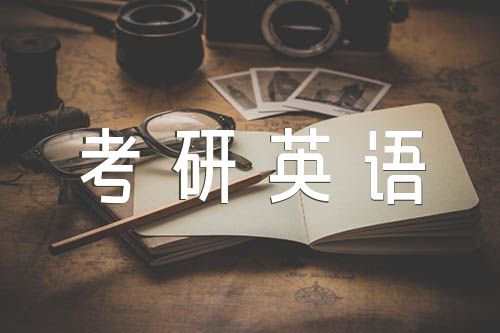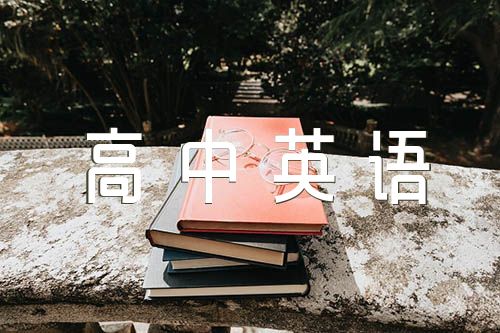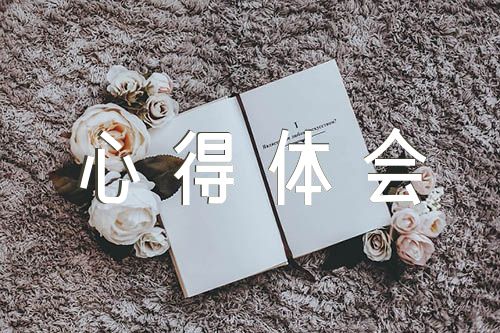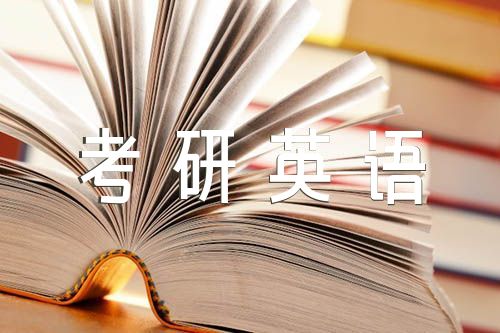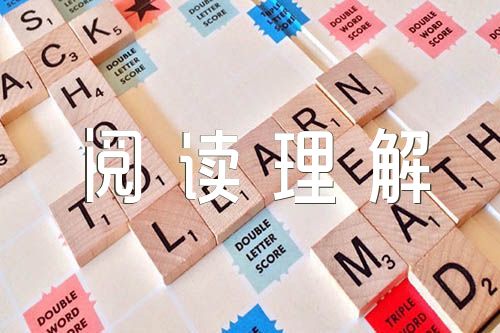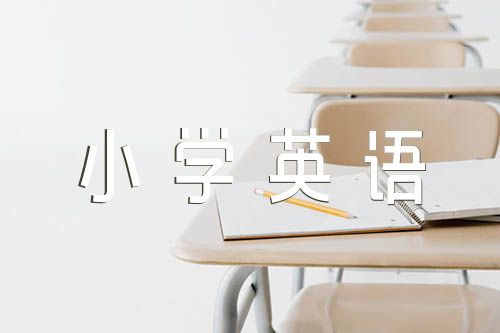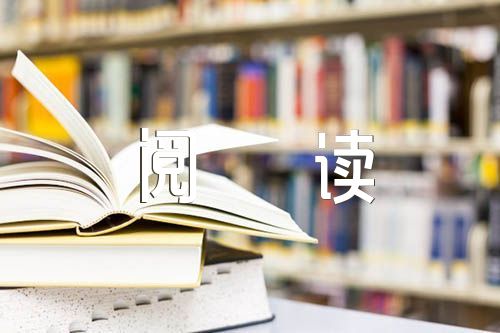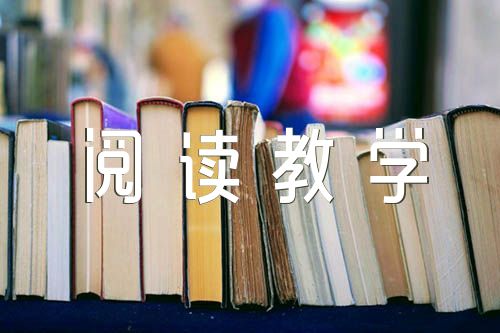【www.jsxqjc.com--英语阅读】
分析(英语:Analysis)是在头脑中把事物或对象由整体分解成各个部分或属性。尽管“分析”作为一个正式的概念在近年来才逐步建立起来,这一技巧自亚里士多德(公元前384年至322年)就已经应用在了数学、逻辑学等多个领域。以下是为大家整理的英语阅读理解分析【六篇】,欢迎品鉴!

【篇一】英语阅读理解分析
2017年考研已结束,很多考生想知道今年的题型难度等问题,考研英语阅读在近五年文章和题型难度都有所加大,但整体上趋于平稳。下面我就给大家分析一下今年阅读的整体趋势。
一、文章难度保持不变
今年考研阅读理解Part A的四篇文章难度依然呈现递增式的现象。前两篇比较简单,后两篇相对较难。考生们在解题时,因做到有的放矢,前两篇尽可能降低错误率,从而保证基本得分。
所选文章的题材依然以社会生活类,经济类为主。比如Text1的话题是大家比较熟悉的,美国安检程序复杂,提前安检这个解决方案还没有实现。再比如Text3的话题是今年非常热门的英国退欧。该文章的落脚点放在英国退欧后,全国GDP下划。
今年考试所选文章结构上来看,和历年也保持一样。基本都是采取现象到本质的分析。比如Text1第一段讲美国登机很耗时,第二段解释这个现象的原因(为了安全),第三段指出美国运输管理局(TSA)发现机场安检的有效性并进一步提升安检措施,第四段解释登机队伍过长的原因,第五段提出TSA针对这一问题介绍“提前安检”项目,第六段指出“提前安检”的弊端,最后一段表明“提前安检”有待进一步完善。
二、考题仍以细节题和推理题为主
考生们都知道考研英语阅读的题型设置分别是细节题,推理题,词义题,态度题,例证题和主旨题这六大类。其中以细节题和推理题为主,今年也不例外。就今年阅读理解Part A考题设置来看,其中Text 1包括一道例证题,一道推理题,一道词义题,一道细节题,一道主旨题。Text 2包括两道细节题,两道推理题,一道态度题。Text 3包括一道细节题,三道推理题,一道主旨题。Text 4包括一道推理题,三道细节题,一道态度题。
今年的考题,从题型分布来看,Text 1比较多样化,每个题型基本都有所涉及,需要考生读文章时做到全面,每个段落都要读懂。Text 3难度相对较大,因为有三道推理题,要求考生在读懂原文的基础上,加以理解,把握文章的言外之意。
三、解题方法,万变不离其宗
虽然每年的考题会变化,但是我们解析时发现,解题方法不变,也就是说万变不离其宗。下面我给大家讲讲考频最高的两类题型:细节题和推理题的解题方法。
细节题:一般就文章具体细节信息提问。解这类题时,应将题干中的关键词(人名,地名,时间,专有名词等)带入原文,回文定位,找到题干关键词在原文中的出处,在此出处详读。一般细节题的正确答案就是对原文定位处的同义置换。
推理题:难度相对较大,如果推理题是就文章细节进行推理,其做法等同于细节题的做法,只是正确答案是原文的言外之意,需要考生根据原文意思进行把控。如果推理题是就文章段落或者全文进行推理,那么其正确答案一般是文章的段落中心或者全文中心。
总之,2017年英语(一)传统阅读具有以下特征。第一话题选取上:贴近生活,考生熟悉、关心。第二选项设置上:难度持平,且解题方法不变。只要在考试中谨记我在课堂中讲到的正确选项6大规律以及干扰选项7大规律,相信今年一定会考出令自己满意的成绩。最后提前预祝大家金榜题名!
【篇二】英语阅读理解分析
英语阅读理解分析
一、推断题?
1.解推断题应注意:?
(1)不能以自己的观点代替作者的观点;?
(2)推理的根据来自于上下文。?
2.推断题的常见形式:?
(1) It can be inferred1 from the text that ______.?
(2) From the text we know that ______.?
(3) The story implies2 that ______.?
(4) The paragraph3 following the passage will most probably be ______.?
(5) The writer?s attitude toward…is ______.?
3.解推断题的方法:?
解推断题最主要的方法是根据词义关系推断具体细节。?
Example 1 One day a man walkedsintosa pet shop and said to the shop assistant,“I need two small mice and about five dozen roaches and two spiders.”?
“What do you need these things for?”the shop assistant was very surprised.?
“Well,”replied the man,“I’m moving out of my apartment and the landlord4 insists that I should leave the house in exactly the same condition as I found it.”?
Q: The passage suggests that when the writer movedsintosthe house, it was ______.
A. very clean?
B. just cleaned by the landlord?
C. tidy and comfortable?
D. dirty and full of insects?
解析:要恢复原样须买些老鼠和蟑螂等昆虫,因此推出答案为D。?
Example 2 Some people are never right. They never have good luck. They usually do the wrong thing and say the wrong thing. And even if what they say or do is OK, they as a rule say it or do it at the wrong time. So these people always have problems. They often break dishes. They sometimes miss buses and airplanes.?
Mr Neff is different. He is always right. He is never wrong. He usually has good luck. He seldom has problems. He never breaks dishes. He never misses buses or airplanes. Even if he does miss them, it is always the fault of the buses or air planes. Mr Neff knows al-most everything. He doesn’t ask questions;he answers q uestions. He never says,“I don’t know.”?
Q: Which of the following best describes the writer’s attitude towards Mr Neff??A. He finds Mr Neff hard to understand?
B. He thinks Mr Neff wonderful?
C. He feels pity for Mr Neff?
D. He does not like Mr Neff?
解析:本文中使用never,还写到Even if he does miss them, it is always the fault of the buses or the airplanes.故暗示他对Mr Neff的讨厌之情。答案为D。?
二、事实题?
在阅读理解题中,又有相当一部分属于事实或细节题,下面仅就这类题的正确解法作简要说明。?
1.直接事实题?
在解答这类问题时要求学生抓住题干文字信息,采用针对性方法进行阅读,因为这类题的答案在文章中可以直接找到。?
A giant dam was built many years ago to control the Colorado River in the U.S. T his dam was built to protect the land and houses around the river.?
This huge dam is in the Black Canyon5. It is possible to drive a car from one sid e of the river to the other on a road, which is on the top of the dam. This dam is so big that there is an elevator inside. The elevator goes down forty-four stories from the road to the bottom. There is enough concrete6 in this dam to build a highway from New York to San Francisco. Thousands of people worked on this d am for five years.?
This huge dam was called Boulder7 Dam when it was finished in 1936. Later it was renamed Hoover Dam in honor8 of a president of the United9 States. Hoover Dam, one of the highest dams in the world, is situated10 between the states of Arizona and Nevada.?
Q: Hoover Dam lies ______.?
A. between Arizona and Nevada?
B. in the Black Canyon?
C. between New York and San Francisco?
D. both A and B?
解析:由第二段的第一句话和最后一段的最后一句话可得出正确答案。?
2.间接事实题?
解此类题需要结合上下文提供的语境和信息进行简单的概括和判断。?
Invited by Mr. Ye Huixian, host of the well?received TV programme“Stars Tonig ht”, Miss Luo Lin, Miss Asia of 1991, appeared as the guest hostess on the Shan ghai TV screen last Sunday.?
Born in Shanghai and taken to Hong Kong when she was only six years old, Luo Lin has never dreamed of being Miss Asia. Her childhood dream was to be an air?hostess. Before she took part in the competition, she had been an airhostess in Cat hay11 Airline for seven years. However, it still took her three months to learn the art of walking on the stage, dancing, singing, making-up and other proper manners12, designed by the Asia TV Station.?
“It’s really a hard job for me. I won’t enter for such competition any more. Anyhow, I am quite lucky. I am also glad to have had more chance to work for the social welfare13 since I won the title. This time, in Shanghai, I"d love to make a deep impression on my TV audience,“ said Luo Lin with a sweet smile.?
Q: Which of the following is NOT true??
A. Luo Lin is a native of Shanghai.?
B. Luo Lin moved to Hongkong with her parents.?
C. Luo Lin won the title of Miss Asia in 1991.?
D. Asia TV Station helped Luo Lin to become Miss Asia.?
解析: A、C和D都可在原文找到答案,而B项原文列的是: taken to Hong Kong可判断不是moved to Hong Kong with her parents,因此选B。?
3.词义理解题?
做此类题时,学生应尽可能地利用生词所在的上下文来猜测词义,即利用我们所熟悉的词或短语和上下文中的已知部分进行逻辑上的推理,有时还需依靠常识和经验。?
Another source14 of knowledge is the vast15 store of traditional practices handed do wn from father to son, or mother to daughter, of old country customs16, of folklor e. All this is very difficult for a college student to examine, for much knowled ge and personal experience is needed here to separate17 good plants from wild gras s. The college student should learn to realize and remember how much of real val ue science has found in this wide, confused18 wilderness19 and how often scientific discoveries of what had existed in this area long age.?
Q: In the last paragraph the phrase“this wide, confused wilderness”refers to ______.?
A. personal experience?
B. wild weeds among good plants?
C. the information from the parents?
D. the vast store of traditional practices?
解析: D。划线部分指的就是上文的another source of knowledge,即: the vast store of traditional practices。
【篇三】英语阅读理解分析
考研英语(二)阅读理解分析
1 选材思路:
从最近几年的真题中明显看出经济学占据有举足轻重的地位,最近三年中每一次四篇文章中都有两篇是和经济学相关的。第一篇考了艺术品市场拍卖的波动和第三篇人们的喜好和企业市场营销的关系;考察了第一篇外部董事对于企业运作的作用和第四篇欧盟如何应对债务**;今年第二篇又考察了人们对颜色的喜爱还是和企业的营销相关以及第四篇如何在失业率上升中见到忧中之喜。其实仔细研读就会发现,大纲对于英语二的要求是考生应能读懂不同题材和体裁的文字材料,题材包括经济、管理、社会、文化、科普等,体裁包括说明文、议论文和记叙文等。在大纲中,经济学就是摆在第一位的,我相信对于考MBA相关专业的考生至少在背景常识方面会具有一定的优势,而对于很多艺术类考生则是很不利的。因此希望考生平时还是要多注重积累一些经济学方面的常识,对于英语二的阅读是大有裨益的。
2 文章结构:
对于文章的结构,考生要注意学会识别主题和支持性细节的结构关系,常见的主要有三大类:例证、对比和因果关系。这三种论证方法又以对比最难理解,而对比恰恰使我们考研最喜欢考察的一种结构。这里稍微分析一下,考研中的对比还分成两大类:第一种比较常见的是大众对作者观点的对比,因为我们考试的文章几乎都选在西方的报刊杂志,所以为了吸引读者的眼球,作者的观点一定是匪夷所思的,比如今年阅读的第四篇文章第一段就讲述经济衰退了,失业只是刚刚开始,大众一定认为经济衰退和失业率的上升一定是不好的,可是第二段开始就话锋一转讲述他也能重塑我们的政治、文化甚至是社会特点,第三段更进一步论述我们还能从经济衰退中找到好的东西,明显和我们的固定思维是相反的。因此考生读文章千万不能带着主观臆断去读,要以旁观者的立场来看待文章。又如第二篇文章一开头说女孩子钟情粉红色,然后分析大众认为的原因DNA相关,但紧接着马上否定这个观点,最后引述还是和企业的市场营销相关联。第二种是正反对比,就是对于同一个事物或者社会现象会分成两类人的观点,一类支持的,一类反对的,还有要关注作者观点。例如今年阅读的第三篇关于分离DNA的专利授权问题。文章一开始先引述BIO人员的观点,他们都是支持授权的;从第三段开始接着引述反对这的观点以及为什么反对的原因;最后用例子说明当前的.社会争议问题。考生在阅读考研文章的时候一定注意对比关系,才能正确理解文章的主旨大意。
3 考点分布:
目前英语二主要就是考察主题和细节。
先说主题。第一种考察就是直白的主题题型,如“mainly about”或者“best title”,这类题目考生只要把握住核心概念,选项中必须出现核心概念,例如今年的第25题,通篇文章核心就是在阐述homework,首先就在选项找核心概念,这样就能排除两个,接着关注细节不能出现,关于问题是最后第二段的细节,而且通篇文章都在批判L.A. Unified改变回家作业的方法,所以答案就很明确了。第二种比较含蓄。例如最近几年推理判断题型较多,其实很多推理判断考生不知道如何取舍,更多时候还是考察主题。依然以今年真题为例,例如第二篇的第28题对应原文的第三段核心就是营销,第29题和第30题对应第四段主题要把受众分类以期获得更大的利润。
其次就是大量的细节定位。第一种考察方法就是Part A当中的细节事实题,这是占据比重最大的一种题目,考生只要返回原文定位,然后同义替换就能找出正确答案。如第一篇第22题,根据题干中rule以及because定位在原文二段首句,读懂“…completing their homework”就是选出对应的完成作业作为正确答案。第二种就是英语二的Part B部分,今年和一样考察的是配对题,而且今年比去年更简单,因为5个题干基本和原文顺序保持一致,根据大写字母定位,找出每个人的观点,然后连线。唯一的难点就是文中没有出现45中的Marx and Engels,但根据音译考生也猜得出这两个应该是马克思和恩格斯,就能对应到原文的Communist Manifesto《共产党宣言》,我们从小就学过这是现代共产主义学说发展史上的第一步经典,有马克思和恩格斯合著。我想只要定位定准,这部分考生都应该能获得不错的成绩。
年年岁岁文不同,岁岁年年题相似。事实上,考研有时候连词都一样,例如今年第四篇第36题考察了“silver linings”这个词,其实这个词组在的英语一中曾经就作为过考点,这句话出处是“Every cloud has a silver lining” 每一片乌云背后总有一丝光芒,可以引申为:学会从绝望中寻找到希望,这样本题的答案就一目了然了。考生只有好好把握历年真题,吃透精髓,才能在考场上立于不败之地。
。【篇四】英语阅读理解分析
江苏省武进高级中学 陆田森
3月
阅读理解在高考试卷中占分40分,如果加上完形填空题(有人称之为缺词阅读)30分,那就是70分,占了将近总分的一半。高中《英语课程标准》指出:高中英语教学应该着重培养以下几方面的能力:在人际交往中得体地使用英语的能力;用英语获取和处理信息的能力;用英语分析问题和解决问题的能力以及批判性思维能力。这其中都重点涉及到阅读理解能力的培养。高考之所以重视阅读理解,因为阅读是一种比较高级的语言能力,它是获取更综合、更复杂、更精确信息的必要手段。同时阅读能力也是做好其他题型,如听力、单项填空、短文改错和书面表达的基本因素。阅读理解的考核是在语篇中进行的,也易于考查观察、判断、推理与综合的能力。
高考“阅读理解题”部分的五篇短文涵盖了记叙文、说明文和应用文等多种体裁,涉及到人物、故事、社会、文化、政治、经济、科普、新闻和广告等多种题材。近年来高考英语阅读理解选材具有时代感,题材多样,内容丰富。文章都是没有改编的原汁原味的原文,体现了现代英语的特点,加大了内容的复杂程度,反映了现代科学及现实生活中的新发展新变化。如果没有良好的阅读素养和英语语感,读起来很艰涩费解。同时,阅读发问具有较高的技巧,凝聚了较强的思维力度,因而有很好的测试效度和区分度。五篇文章加上所问问题,总单词量在以上,要求在35分钟内完成。阅读速度平均为每分钟60个词。所问问题涉及文章中的知识细节,概括中心意思,猜测陌生词语的意思和推理判断。问题方式采用多项选择题型,每题给出四个备选答案,要求从中选出一个最佳答案。要想做好阅读理解,学生必须具备以下能力:
1、能迅速看准每一句的结构,找出主句的主语、谓语和宾语。2、有一定的词汇量和分辨词义词性的能力。3、能灵活运动所学过的语法和词汇知识,对影响意思理解的复合句、非谓语动词短语、关联词语、后置定语、省略、替代和跳跃等语言现象做出正确判断。4、有良好的思维能力。会边看边加工所得到的信息,从而做出正确的推理判断,综合概括,准确理解表面意思和深层含义。5、会精读,也会跳读和略读。6、具有相当的阅读实践经验和良好的语感。7、对英美文化有一定了解。
一、帮助学生分析高考试卷特点
近几年的高考试卷是最有效、最科学、同时也是最重要的教学资源。认真帮助学生分析高考试卷的特点,让学生亲自体验和分析高考试卷是高三教学的一个重要环节。通过近三年乃至近五年的各种高考试卷中的阅读理解训练和分析,有利于学生具体了解高考考的是什么文章,何种题型,难度多大,应该从那些方面进行准备,以免使自己在备考时走上弯路。
请看20北京春季高考试卷中阅读理解试题中的一篇文章
Blameless
I was a freshman in college when I met the Whites. They were completely different from my own family, yet I felt at home with them immediately. Jane White and I became friends at school, and her family welcomed me like a long-lost cousin.
In my family, it was always important to place blame when anything had happened.
“Who did this?” my mother would scream about a dirty kitchen.
“This is all your fault, Katharine,”my father would insist (坚持)when the cat got out or the dishwasher broke.
From the time we were little, my sister, brothers and I told on each other. We set a place for blame at the dinner table.
But the Whites didn’t worry about who had done what. They picked up the pieces and moved on with their lives. The beauty of this was driven home to me the summer Jane died.
In July, the White sisters and I decided to take a car trip from their home in Florida to New York. The two older sisters, Sarah and Jane, were college students, and the youngest, Amy, had recently turned sixteen. Proud of having a new driver’s license(驾照), Amy was excited about practicing her driving on the trip. She showed off her license to everyone she met.
The big sisters shared the driving of Sarah’s new car during the first part of the trip, but when they reached less crowded areas, they let Amy take over. Somewhere in South Carolina, we pulled off the highway to eat. After lunch, Amy got behind the wheel. She came to a crossroads with a stop sign. Whether she was nervous or just didn’t see the sign no one would ever know, but Amy continued into the crossroads without stopping. The driver of a large truck, unable to stop in time, ran into our car.
Jane was killed immediately.
I was slightly injured. The most difficult thing that I’ve ever done was to call the Whites to tell them about the accident and that Jane had died. Painful as it was for me to lose a good friend, I knew that it was far worse for them to lose a child.
When Mr. and Mrs. White arrived at the hospital, they found their two daughters sharing a room. Sarah had a few cuts on the head; Amy’s leg was broken. They hugged(拥抱)us all and cried tears of sadness and of joy at seeing their daughters. They wiped away the girls’ tears and made a few jokes at Amy as she learned to use her crutches(拐杖).
To both of their daughters, and especially to Amy, over and over they simply said, “We’re so glad that you’re alive.”
I was astonished. No blame. No accusations.
Later, I asked the Whites why they never talked about the fact that Amy was driving and had run a stop sign.
Mrs. White said, “Jane’s gone, and we miss her terribly. Nothing we say or do will ever bring her back. But Amy has her whole life ahead of her. How can she lead a full and happy life if she feels we blame her for her sister’s death?”
They were right. Amy graduated from the University of California and got married several years ago. She works as a teacher of learning-disabled students. She’s also a mother of two little girls of her own, the oldest named Jane.
1. The author of the passage is ______ .
A. Mrs. White’s niece B. Jane’s school friend
C. The Whites’ cousin D. Sarah’s friend from college
2. How did the author’s(作者) parents differ from the Whites?
A. The author’s parents were less caring.
B. The author’s parents were less loving.
C. The author’s parents were less friendly.
D. The author’s parents were less understanding.
3. How did the accident happen?
A. Amy didn’t stop at a crossroads and a truck hit their car.
B. Amy didn’t know what to do when she saw the stop sign.
C. Amy didn’t’ slow down so their car ran into a truck.
D. Amy didn’t get off the highway at a crossroads.
4. The accident took place in _______ .
A. Florida B. California
C. South Carolina D. New York
5. The Whites did not blame Amy for Jane’s death because ________ .
A. they didn’t want Amy to feel ashamed and sorry for the rest of her life
B. Amy was badly injured herself and they didn’t want to add to her pain
C. they didn’t want to blame their children in front of others
D. Amy was their youngest daughter and they loved her best
6. From the passage we can learn that ______ .
A. Amy has never recovered from the shock
B. Amy changed her job after the accident
C. Amy lost her memory after the accident
D. Amy has lived quite a normal life
这是一篇看来很真实的故事,故事里还蕴含着很深的生活哲理。文章很长,故事情节也很完整。要想做好这一篇文章,读者必须了解下面的问题:
Who are in the story? What are the relationships among them? What is the main event in the story? When and where did it take place? Why is there the event? How did people solve the problem? What is the difference among them? Why did the writer tell the story?等等。其实,当读者明白了这些问题之后,也就掌握的文章的意思,也就能够从容的进行答题了。
二、注意阅读理解题型的分析
要想做好阅读理解学生必须具备一定的语言积累和相关的背景知识、生活体验。这些在于平时学习生活的长期积累。我们很难在这方面有大的作为。但是了解各种题型的特点以及如何对待这种题型是我们现阶段能够做到的。高考题型主要有四种:(见附表)
1、考查主要思想或段落大意
1) The story mainly tells us ________.
2) From the passage we know that ________.
3) The writer wants to tell us ________.
4) The best title of this passage should be ________.
5) The main idea of Paragraph 1 is ________.
6) Paragraph 2 deals with ________.
7) The last paragraph ends the passage with an emphasis on ________.
8) What is the subject discussed in the text?
9) Whish of the following statements is best supported by the last paragraph?
这类题的范围一般包括:短文标题、主题、大意或段落大意等。做这类题目时,要迅速地剔除文中的细节事实、作者所使用的论据,找到各段的主题句,然后进行归纳、总结和概括。但要注意:概括出来的中心意思一定要能够覆盖全文或整个段落,绝对不可离题太远、太笼统,或者只概括一段或几句话的意思。
2、推理判断、理解作者写作意图的测试题
1) We can infer from the passage ________.
2) From the passage, we can tell ________.
3) We can conclude from the passage ________.
4) What probably happened in the end?
5) When he said, ”…“, he meant ________.
6) This passage would most likely to be found in ________.
7) This article is particularly written for ________.
8) When the writer says … he really means ________.
9) The author"s attitude to… is that ________.
10) What kind of atmosphere(气氛)does the writer want to create in this passage?
11) The writer"s purpose in writing this story is ________.
推理判断题属于主观性极强的高层次阅读理解题。做这类题目时,要严格依据作者所陈述的细节、事实以及作者的措词,找出能够表露作者思想倾向和感情色彩的词语,然后利用自己已获得的相关知识进行推理判断,从而得出符合逻辑的结论。应注意:当问及作者的看法、意图与态度时,不是在问你作为中国学生的想法,而是作者本人在字里行间所表述的观点。
3、考查文章细节理解的测试题
1) The right order which tells the story is ________.
2) Choose the right order of the events given in the following.
3) Which of the following maps shows the right position of ….?
4) Which statement is true?
这类试题考查考生对文中某一细节或重要事实的辨认、理解。因此,考生应该首先阅读短文后面的问题,确定所需查找的细节及事实的范围,然后利用略读手法快速确定文中的出处,并对其进行转换、加工,直至确定最佳答案。
4、猜测悟义,常见的题干有
1) The word… in paragraph… refers to ________.
2) The underlined word ”…“ means ________.
3) The word ”…“ could be replaced by ________.
4) Which of the following words can take the place of …?
5)By saying “The Salt Lake City Public Library is sold on the idea,” the writer means the library____________.
6)“To do this”(in Paragraph 3) means_______.
7)“He was just Joe Everybody. ”(in the last paragraph)means________.
8)What does the underlined word ”it\" (paragraph 2) refer to?
考生的猜词技巧是高考英语“阅读理解题”考查的一个重要方面,《教学大纲》和《考试说明》明确要求考生能读懂生词率不超过3%的阅读材料。考生常用的猜词技巧有:
1.根据合成、转化、派生等构词法知识猜测词义;
2.根据上下文中的同义词、反义词猜测词义;
3.利用上下文中的定语、同位语等猜测词义;
4.利用作者的解释、注释等猜测词义;
5.利用上下文中表示对比关系的词语,如:while、but、rather than、far from等判断词义。
三、正确的阅读方法指导
在阅读的方法上,可以使用以下几种方法:
1、跳读。就是快速地、一步阅读法。实际上是有选择的阅读,即在文章中找到一个或关键几个词。用这种阅读方法回答who、what、when、where之类的问题最为有效。
2、略读。所谓略读是指比跳读慢些的二步阅读法。也就是泛泛地、粗略地快速阅读,目的是了解大意,对文章有个总的概念。此种阅读方法能回答why、how之类的问题。
3、精读。所谓精读就是用最细致、最慢、最深层的方法阅读,目的是求得对所读文章的全部意义的理解与掌握。在应用这种阅读方法前,首先应用跳读法找到与问题有关联的地方,然后细读。有时候文中有直接回答,有时候回答分布在整篇短文中,需要考生找出,进行释义、归纳、概括等。此种阅读方法能回答需推断、归纳和演绎的题目。
而在使用阅读技巧时,应该尽量做到以下几点:
1、先快速浏览一下全文。大概了解一下这是记叙文还是科普文章,中文注释的单词是什么意思。这一步要快。然后,尽量做到带着问题阅读短文,根据不同题型,选用不同阅读方法。即先看问题,再决定选用跳读、略读和精读方法,这样做,目的性强,能收到事半功倍的功效。
2、找出主题句,确定中心思想。每篇文章均讲述一个主题,不管它有几个段落,它们都围绕着一个中心思想。确定了中心思想,即抓住了关键。概括中心意思时,要注意不可离题太远,太笼统,但也不要只概括一段或几句的意思。随后通读全文,找出重要词语,通常在下面划线,再进行推敲。如有的文章带标题,应仔细看标题。标题是文章主题的高度概括,它可以给我们一些启示和线索。
3、仔细看原文,凡人物与数字或地名可用笔作个记号,没弄明白的地方也可划个线,以便看完全文再重读。读时要注意弄明白句子的主谓结构,同时在大脑中加工所得到的信息。
4、推断单词、句子和通篇的含义。在做阅读理解时,常常会遇到不认识的单词、看不懂的句子等。这时考生不要紧张,而应运用学过的语言知识,通过逻辑思维,去推断出此单词和整个句子的含义。判断词义词性时要注意结合上下文。人家考的是在特定的环境下的意思。只要静下心来,绝大部分是能推断成功的。
5、尽快选择答案。在阅读理解时,如碰到难题,如推断、结论题,不要过多地花费时间,可留下标记,待那些有把握的题目做完后再回过头来做。有时候其它题目做完后,再做难题,能多少受到点启发,对短文的理解也会有所帮助与加深,难题部分也可能就解决了。
6、问及对某个问题的看法与态度,要记住是在问作者态度,而不是问你作为中国学生的想法。
7、培养学生的速度意识,严格限制阅读时间,提高略读和寻读能力。
8、通过提问、解析文章结构、评阅读理解题等课堂活动,使学生学会总结文章中心大意,把握行文逻辑,体会深层结构、隐含意义及作者意图,把握解题思路。
此外,阅读训练过程中还应该帮助学生克服不良的阅读习惯,如心里翻译、手指点读、复读、句下划线等。
四、以阅读为主线,在阅读中带动词汇、语法复习
“以阅读为主线,在阅读中带动词汇、语法复习”的复习模式,也就是说复习材料,练习大都以语篇为主,词汇、语法复习有意识地渗透在阅读中。根据目前的复习情况这一点是可行的,实践证明是有效的。然而,这种复习方法对教师提出了更高的要求,教师不能生搬硬套,随心所欲地拿来别人的试卷,或从语法书中抄些语法题应付。而是做到:
1、精心选材。选择和利用各种体裁各异,内容丰富多彩的文章进行精读。
2、阅读技能的训练。每堂课让学生在规定的时间进行快速阅读。掌握“略读”、“扫读”、“审读”和“跳读”的技能。
3、良好的问题情境设置。良好的情境问题有助于使学习材料的意义充分地发挥出来,激发学生积极主动地使新旧知识发生相互作用,产生有机联系的心向,从而使新知识获得实际意义,旧知识达到巩固、强化的目的。因此,当阅读的第一任务完成以后,我就有意识地因势利导挖掘材料内容,设计有关高中阶段所学词汇、语法方面的问题。让词汇的意义和语法结构在语篇理解的大环境下,给人留下深刻的印象。
如范文:(传记)
……
So I did. They made a short film of me, reading one of my poems and I became more interested in literature than ever. I wondered what I should do after this, and decided weeks later that I could not imagine myself spending the rest of my days dealing with machines. So one evening, I hesitatingly told my parents that I wanted to return to school. They were greatly surprised and I think,a little afraid but they did not try to persuade me not to. They wanted to know if I was true, if I know what it meant and whether I realized that if I gave up my job training, it would be very difficult to get a good job. But nothing could stop me ,and they asked about the matter no further.
①通过做阅读理解题,强化难句的理解和应用。
Which of the following is not true?
A:His parents worried that he would have no future if he returned to school.
B:His parents worried that he would have school again.
C:It was difficult for one who studied literature to get a job.
D:His parents did not want him to continue his education.
95%的同学被这一题给难住了。原来学生看不懂文中划线部分的句子。再究其原因,学生分析不出句子结构。这时我就启发他们,这是个复合句。两个“if”和一个“whether”引导的是并列句,在第三个并列句中又包含一个主从复合句。这样一分析,学生对句子的意思豁然开朗。当然,这时我也会出些主从复合句方面的选择题、填空题让他们巩固一下。
②这篇文章多处出现较复杂但又常用的语法现象,如:imagine myself spending 等,我便在黑板上归纳了后面只能跟动名词的动词,并出些在特定语境下的相关选择题。
③扩大词汇量。
A、利用同义词、反义词、同族词等对比联想记忆法记单词。
B、利用合成、派生、转化构词法帮助学生扩大词汇量。
如我通过问题:Why did the writer tell her parents about her decision in a hesitating way? 把学生的注意力集中到“hesitating”一词。同学们根据上下文,了解到作者的父母是不愿意作者再去上学的,因此当作者把自己的决定告诉父母时,他“犹豫”甚至“不愿意”。通过问答,学生们得知了“hesitatingly“的意思,并加深了印象。接着,我就 “hesitate”进行了词性转换练习。
a. She ________ over the choice between the two dresses. (hesitated)
b. He joined the army without a moment"s __________. (hesitation)
c. He __________ accepted the invitation which came to him unexpectedly. (hesitatingly)
阅读理解是一项含有多种技巧的思维过程,涉及到大量的语言知识。语言知识包括词、词性、句子、语法结构等等;非语言知识包括一定的历史和社会文化背景知识,考生对目标语背景的了解会对理解产生一定的影响。若要正确阅读理解一篇文章,考生就得在阅读中一边阅读,一边进行猜测、推断、归纳、验证。考生除了必须熟练掌握词汇,还必须具备一定的阅读理解的准确性和阅读速度的能力。不经过大量的阅读和长期的阅读训练,仅靠短期突击而掌握阅读方法和技巧,是不可能取得优异成绩的。一个优秀的阅读者往往具备不断延伸猜测和联想的强烈自我意识。提取别人提取不到的已知信息,读懂别人读不懂的文章。训练这种能力、培养这种意识在阅读过程中拓宽思路是很必要的。
【篇五】英语阅读理解分析
英语阅读理解
英语自主性阅读实施心得
莱州市实验中学李向民
众所周知,对于人类来说,广泛阅读是汲取知识的重要途径之一,一本好书会影响人的一生,同样英语阅读也是中学生一种非常重要的学习手段,它不仅可以开阔学生的视野,陶冶学生的情操,更是培养学生表达能力的重要途径之一。通过大量英语自主性阅读可以培养学生良好的学习习惯,训练学生敏锐的思维方式及迅速捕捉重要信息的本领,实现学生听、说、读、写综合语言运用能力的全面提高。在平日的工作中,我把自己如何培养学生自主性阅读的实施心得总结如下:
一、备课
1备材料:在每周星期五一次的阅读课之前,我常常把课本上的阅读材料事先分类,打破原有的顺序,把故事类、科普类、新闻类、体育类、应用文体类等归类后依次填写到我的阅读备课笔记中,再进行仔细阅读,发现新鲜的词汇或国家、城市等就把它记下来,然后在周五之前布置学生分别上网或到图书馆查找有关资料,准备在课前导读用。
2、备学生
上课之前要设想学生对于本周的阅读材料会产生什么样的质疑,对于这些质疑如何处理效果更好,学生会对阅读材料中哪一篇更感兴趣,怎样更吸引学生主动参与去探究知识领域,都要事前做好充分的思想准备。更重要得是要教会学生合作方法,让学生主动地动起来。我会按照心理、性格、情感和认知等方面不同的群体分为四人一个小组,每个小组都有高、中、低、差四个层次的学生,使组内成员有一定的差异性和互补性,这样既保证了小组间的竞争性,又保证了公平性。同时,以高带中、中领低、低帮差、差再促高,使学生遇到问题学会自己发现、自己讨论、自己解决,尽可能地挖掘学生的内在潜能。
二、上课
1、课前导入
上课后,前5分钟是导读时间,即把本节课要涉及到的内容(如新词、国家、地方等)让学生写在黑板右下角,然后根据查到的资料做阅读前演说报告,争取用汉英结合式、背景介绍式、谈论式、复习式给大家做个粗略的.解释,这对表达能力也是个促进。先由学生从小组中推出一两个代表发言,也可以由别的小
组成员来做补充说明,最后我再把需要补充的地方加上去,让学生对所需阅读的材料做到心中有数,真正起到一个导读的作用,为下面的阅读作好良好的铺垫。
2、课中进行
课中阅读一般分为竟猜、闯关和抢答三步。首先,让学生快速默读阅读材料一遍,尤其是对于“who,when,where,why,how”等要一眼找出,其次要知道文章的中心思想及每一小段的中心句,对于阅读材料所涉及的内容有一个大概的猜想了解,尤其是要鼓励学生大胆进行猜词。并在教师指导下进行小组讨论,首先要讨论自己不会的单词,把意思弄明白,然后一个小组可以为其他的小组出竟猜单词,这一活动中每猜对一个单词得5分,最后由总记录员宣布分数。这样学生参与热情高涨,同时又培养了学生的集体主义观念,从而达到阅读教学目的的完成,培养学生自主阅读的能力;接下来是细读,也是为闯关作准备,教师可以列出一些重要词汇,然后稍作解释,不要喋喋不休,要把“权利”放下去,让学生各小组去读。这时候老师可以察言观色,他的真正任务不是教,而是帮。因为课堂教学必须以学生为中心,让学生占据大部分课堂时间,教师必须充分调动学生的积极性,有效地组织生动活泼的课堂活动,及时发现他们的困难,为他们排忧解难,真正成为学生学习上的组织者、管理者、鼓励者、合作者和解难者。训练学生在读的同时,可以一边让学生分组讨论阅读材料的翻译,然后由总操作员下去进行现场抽签,哪个小组抽到第几段就必须进行口头翻译,至于由谁来翻译,则由总操作员说了算。学生必须把整个的阅读材料弄明白才能作到口头翻译,检查时不用面面俱到,可以由总操作员以点带面,但每个小组成员都要认真活动,才会闯关顺利。如果还有解决不了的问题老师可以引导学生共同体会、共同发现,同时一定要注意知识与趣味的结合,科学与人文的结合,记忆与思维的结合。
3、课末反思
下课前5-10分钟学生可以做一下整理和积累。母语阅读中的好词、好句、好段、新词汇、精彩描述、精彩对话、经典句型等的记录和积累会使学生收益一生。同样英语阅读中整理和积累也是一个升华的过程,学生把自己在阅读当中遇到的美好的东西积累到自己平时的积累笔记上,最后写上自己的感想。然后闭着眼睛去回味一下,背诵一下,总结一下,反思一下,这个过程产生的效果真的可
能影响学生的一生。
三、课外阅读
阅读是一种学习,是一种进步,也是一种能力。具备这种能力,还必须具备丰富的知识结构。一个拥有社会、文化、风土人情、天文地理、历史等各方面知识的人,在阅读有关的英语材料时,会突然激活他的内动力,他读起来更轻松、更透彻。他不仅能够理解文中所说的内容,还能将文中所涉及的内容及与之有联系的未出现在文中的内容做深层次透彻的了解。所以,第一我鼓励学生进行课内阅读与课外阅读相结合,我推荐了好多有益的适合他们课后阅读的书目,既简单又不乏知识性、趣味性,还会粗略了解一些世界名著;第二进行以媒体为载体的英语阅读训练,为了使英语阅读不枯燥乏味,我会定期带领学生一起听英文歌曲、看英文原版精致的电影、或进行名著欣赏。通过类似的活动来调动学生学习英语的自觉性,从另一层次去做进一步的“阅读理解”,然后我们会分小组进行准备,在每周一的“英语角”活动中,进行即兴演讲,别的小组都可以参与擂台赛。擂主就是即兴演讲的冠军。
四、课后作业
我每周定期布置一次对英语阅读理解的改写、扩写或缩写,这比单纯的做阅读理解更深一层,学生必须在理解的基础上进行改、扩、缩写。如果把握不好原有的阅读材料,要想进行改动会是难上加难,所以我会鼓励学生畅所欲“写”,把学生写下来的文章当作作文一样,让学生互相进行批阅,可以在旁边进行旁批,然后要在最后给出总评,提出修改意见或希望,最后打上等级。接下来我会认真复审一遍,仔细批阅之后再还给学生修改。学生通过自己去做作文、批作文、写评语、看评语,最后再据此修改。我还会让学生对一些稍简单的文章进行口头复述或进行调查,写出调查报告,或办手抄报,把调查报告或手抄报放在橱窗里进行展览,以此激发他们进行阅读理解的积极性。
总之,我们要根据学生的实际情况进行限定性阅读和开放性阅读相结合的方式,侧重阅读和理解,同时兼顾听说读写的综合训练,侧重于阅读理解能力和英语文化素养的培养与提高。注重学生的小组合作活动,侧重学生的自主探究能力的培养,发掘不同层次学生的英语潜能,激励整体学生英语学习氛围,让学生
体验学习途径及阅读过程中的成功和乐趣,从而有效地进行自主性阅读学习,提高学生自主学习的能力。所以,我认为“基于母语环境的英语自主性阅读与表达能力的培养”其本身就是对我们所从事的职业的帮助,是让英语阅读理解自己和更多的教师从繁重的、低效的劳动中挣脱出来;让自己的孩子和更多的孩子从沉重的、无止境的压力中解脱出来的一缕春光,这给学生提供了一个展示自我的平台,让我们真诚地、执着地去做,不再重复昨天的故事。
【篇六】英语阅读理解分析
81、(1分)
Have you eaten too much over the holidays? You should try fidgeting for a while. Those around you might not like it, but scratching moving your nails 指甲) against a part of your body) and twitching moving suddenly and quickly when you don’ t want to) is an important way of burning up calories 卡路里).
American researchers have found that some people’s squirming continuously turn your body when nervous) and wigging move in small movements, especially from side to side) equals 等于) several miles of slow running each day.
The scientists, based at the National Institute of Health’s laboratory in Phenix, Arizona, are studying why some people get fat and other stay slim.
In one study 177 people each spent 24 hours in a room in the institute where the amount 量) of energy is measured by their oxygen and carbon dioxide 二氧化碳) levels. By the end of the day, some people had burned up 800 calories in toe-tapping, moving the front part of your foot up and down) finger-drumming hitting your fingers continuously and lightly against something hard) and other nervous habits. However, others had burned up only 100 calories.
The researchers found that slim women fidget more than fat women, but there was no significant difference in men. Heavy people burn up more energy when they fidget than do thin people.
1. Which of the following can be used to explain the meaning of “fidgeting”?
A. scratching and twitching B. squirming and wigging
C. slow running D. moving one’s body nervously
2. We can know from the passage that scientists believe the reason why some people get fat and other people stay slim is that ____ .
A. thin people burn up less calories than fat people
B. fat people burn up more calories than thin people
C. those who burn up more calories than others will be thinner
D. those who fidget more than others will be thinner
3. Scientists found in the experiment that ____ .
A. the energy burned up by fat people when they fidget was more than that burned up by thin people when they fidget
B. some people’s fidgeting burned up more than 800 calories, but some people’s fidgeting burned up less than 100 calories
C. slim women fidget more than fat women but fat men fidget more than thin men
D. thin men fidget more than fat men
4. If someone is thin in a pleasant way, we say they are ____ .
A. skinny B. bony C. slim D. underweight
5. Scientists think a fidget habit to be ____ .
A. a way to lose fat
B. a nervous habit annoying使讨厌) the people around
C. a better exercise than slow running
D. a habit of thin people
82、(1分)
Scientists would like to place a huge mirror in space above the earth. It might be sixty miles wide. It would be used to catch the rays 光线) of the sun. It would direct the sun’s rays upon the earth as a child might do to make sunlight dance on the wall with a hand mirror.
Why do they want to do this? The sun’s rays could be helpful in many ways. They could light up cities by night. The warm rays could stop frosts霜冻) which might come at might and fruit crops. They could melt 融化) dangerous icebergs in the ocean. Perhaps they could change cloud movements and bring rain where it is needed.
1. The huge mirror would ______.
A. stand 60 miles in height 高度). B. be 60 miles from side to side.
C. cover 60 miles of the earth. D. be 60 miles above the earth.
2. The mirror would be used to ______.
A. reflect 反射)sunlight. B. absorb 吸收) sunlight.
C. see what the earth looks like. D. see how clouds move.
3. The strong light from the mirror could possibly ______.
A. hurt fruit crops. B. set fire to cities.
C. bring longer daytime. D. shine through walls.
4. The huge mirror is ______.
A. something in a story. B. already made.
C. just an idea. D. to be made soon.
83、(1分)
In Denmark, parents are allowed to set up a new school if they are dissatisfied with the school in the area where they are living. Although these schools have to follow the national courses, they are allowed a lot of choice in deciding what to teach. Some of these new schools are called “small schools” because usually the number of pupils in them is only sixty, but a school has to have at least twenty-seven pupils.
Cooleenbridge School in Ireland, is a small school similar to the ones in Denmark, it was set up by parents who came from Holland, Germany, Czechoslovakia, England and other parts of Ireland. They came because they wanted to live in the countryside and to grow their own food. In June 1986, they decided to start a school. They managed to get an old, disused primary-school 小学) building and started with twenty-four children aged from four to twelve.
The teachers say, “The important thing in school is doing, not sitting.”And so the courses includes yoga瑜伽), cooking, knitting, kite-making, music, fishing, drama 戏剧) and environmental环境的) river studies, as well as reading, writing, maths and science.
1. What are the rules for setting up a new school in Denmark?
A. Parents are allowed to set up their own school.
B. The school has to follow the national courses.
C. The school has to have at least 27 pupils.
D. All of the above.
2. The writer tells about the Cooleenbridge School in Ireland because ____ .
A. it was set up by parents who are not people of Denmark
B. it was taken as an example of this kind of “small school”
C. there were only twenty-four children
D. the pupils there were aged from 4 to 12
3. What makes this kind of school special?
A. It is set up by parents not by government.
B. It is free to decide what to teach.
C. The number of pupils in it is only sixty.
D. It has to have at least 27 pupils.
4. “The important thing in school is doing not sitting.” What the teachers say actually means ____ .
A. What we should do is teaching in the classroom, not sitting in the office.
B. Children should do more homework at home, not just sit in class to listen to the teachers.
C. Children should learn by themselves not rely on teachers.
D. Children should learn through practice not just from books.
5. The courses includes ____ .
A. yoga, cooking, knitting, kite-making, music, fishing, drama and environmental river studies, except reading, writing, maths and science
B. either yoga, cooking, knitting, kite-making, music, fishing, drama and environmental river studies, or reading, writing, maths and science
C. not only reading, writing, maths and science, but also yoga, cooking knitting, kitemaking, music, fishing, drama and environmental river studies
D. mainly yoga, cooking, knitting, kite-making, music, fishing, drama and environmental river studies, and supplemental 补充的) reading writing, maths and science
84、(1分)
Sixty-year-old grandmother, Fiona McFee, is going to stop working next year and she decided to realize a childhood dream and sail around the coast of Scotland in a small boat. Although the inside of the boat is very cosy it has no running water or electricity. Fiona says she can live without these things but she plans to take her small CD player, her hot water bottle and a bag of books to make sure life isn’t too uncomfortable.
We asked her if she was afraid of being at sea for so long. She said, “Well, I’m going to take a good compass 指南针). Anyway I’m not afraid of death because I love the sea---I just hope it loves me.” Fiona certainly has plenty of energy; in her spare time, she enjoys playing the piano, rock-climbing, canoeing and dancing. Although she is sixty, she doesn’t want to have a quiet and peaceful life. “I’m looking forward to having fun in the rest of my life and that’s exactly why I’d like to be a sailor for a while.”
1. The underlined word cosy in the first paragraph means ____ .
A. bright B. dirty C. comfortable D. dark
2. When Fiona McFee said “---I just hope it loves me.” What she meant was ____
A. Of course , it loves me , since I love it .
B. If I love it , it should love me.
C. I hope it will bring me a safe sailing as a return for my love of it .
D. I hope it will save my life when I am in time of danger .
3. The reason why she would like to have the sail is that ____.
A. she thinks it will be very exciting B. she likes sports and enjoys canoeing
C. she has decided to realize a childhood dream D. she wants to be still active when she gets old
4. What kind of person would you say the old woman is ?
A. Someone who does not show what she is feeling .
B. Someone who is very proud and sure of her success .
C. Someone who doesn’t use her head much .
D. Someone who is open , honest and brave .
5. The best title for this passage is ____ .
A. Life Begins at Sixty B. A Round Coast Sail
C. An Old Woman Sailor D. An Unusual Hobby爱好)
85、(1分)
Of all the fish we catch in the world, we eat only three quarters of it. The rest goes to glue 胶水), soap, margarine 人造奶油), pet food and fertilizer.
Fishermen usually freeze fish they catch at sea. Back in port, they defrost the fish, make the fish have no bones in it and sell it as fresh fish.
Over ninety-five percent of fish caught is in the northern hemisphere. Thus, only about five percent of all fish caught is from south of the equator.
The Japanese are the world champion fish eaters. They eat twice as much fish as the Scandinavians, and five times as much fish as the Americans.
The Russian sturgeon 鲟鱼) is the most expensive fish in the world. The eggs of the sturgeon are called caviar.
1. What do we do with the fish we catch in the world?
A. We eat all the fish we catch.B. We use some of it to make pet food and fertilizer.
C. We do not use 25% of it. D. We freeze all the fish we catch.
2. We catch most fish ____ .
A. south of the equator B. on or just north of the equator
C. in the northern part of the earth D. in the southern hemisphere
3. In the second paragraph, the word “defrost” means ____ .
A. make the fish dead B. make the fish alive
C. make the fish become unfrozen D. make the fish clean
4. Which of the following statements is correct according to the passage?
A. Americans eat five times as much fish as the Scandinavians.
B. Scandinavians eat five times as much fish than the Americans.
C. Japanese eat more fish only than the Americans and Scandinavians in the world.
D. The Americans do not eat so much fish as the Japanese.
86、(1分)
Robert is nine years old and Joanna is seven. They live at Mount Ebenezer. Their father has a big property. In Australia they call a farm a property.
Robert and Joanna like school very much. At school they can talk to their friends but Robert and Joanna cannot see their friends. They live 100, perhaps 300, miles away and like Robert and Joanna, they all go to school by radio.
Mount Ebenezer is in the centre of Australia. Not many people live in “The Centre”. There are no schools with desks and blackboards and no teachers in “The Centre”. School is a room at home with a two-way radio. The teacher also has a two-way radio. Every morning she calls each student on the radio. When all students answer, lessons begin… Think of your teacher 300 miles away!
1. The children in “The Centre” do not go to a school because ______.
A. they live too far away from one another. B. they do not like school.
C. they are not old enough to go to school. D. their families are too poor.
2. In order to send their children to school, parents in “The Centre” of Australia must have ______.
A. a property. B. a car.
C. a school room at home. D. a special radio.
3. Teachers in “The Centre” of Australia teach ______.
A. not in a classroom but at the homes of the students.
B. by speaking only and not showing anything in writing.
C. without using any textbooks or pictures.
D. without knowing whether the students are attending .
4. When children are having a lesson, they can hear their teacher.
A. but their teacher cannot hear them.
B. and their teacher can hear them too.
C. but cannot hear their schoolmates.
D. and see him or her at the same time.
5. A “Property” in Australia is a
A. house. B. school.
C. farm. D. radio.
87、(1分)
Calories show the energy content of different foods. We all need a certain amount each day to make our bodies work properly. Unfortunately, people in Europe and the US now eat about 20 times as much sugar and at least five times as much fat as they did in 1800. This may have something to do with the increase in heart disease in Western countries .
For wedding feasts婚宴), the Bedouin people sometimes prepare a meal of stuffed roast camel. First, they stuff a fish with eggs. Then they put the fish inside a chicken. They put the chicken inside a whole roast sheep. Then, finally, they put all of this inside a cooked camel!
The avocado contains 165 calories for every 100 grams of fruit. This is more than eggs or milk. It also contains twice as much protein 蛋白质) as milk and has more vitamin A, B and C.
1. Which of the following figures 图表) shows us the correct proportion 比例) of the fat and sugar that the Europeans and the Americans eat in 1800 and 1900.
2. Calories show the ____ .
A. fat content of food B. sugar content of food
C. heat and energy content of food D. protein content of food
3. The writer tells about the “stuffed roast camel” because it ____ .
A. shows how important wedding feast to the Bedouin people
B. serves as an example of a high calorie food
C. is made in a very special way
D. is more tasty than any other food
4. What is special for the avocado ?
A. It weighs 100 grams.
B. It is a fruit.
C. An avocado fruit has 165 calories.
D. It contains more calories and vitamin A ,B and C than milk and eggs .
5. Which of the statements is correct according to the passage ?
A. People eat more sugar in Europe than in the US.
B. People in Europe and the US eat less sugar than ever before .
C. People eat more fat in the US than in Europe .
D. People who eat too much fat and sugar will have some health problems .
88、(1分)
The 17th-century Irish farmer Rober Cook was the most unusual person in County Waterford. he always wore white linen. His underwear, night clothes and shirts were all in white, and so were his suits, coats and hats. He became so famous for his clothes and his love for white that he was known all over Ireland as “Linen Cook”.
He refused to have any brown cows in the field of his farm at Cappoquin and even his horses had to be the same pure white as his clothes.
Cook was a eager vegetarian and refused to eat the flesh of any animal or to wear anything produced by an animal.
A fox which attacked 袭击) his chickens was not killed when it was caught. Instead, he gave it a talk on the evils 罪恶) of murder, then offered it a sporting chance by making it run through a line of his farm workers, who had sticks.
Cook had a long and healthy life and showed that “water for drink, vegetables for food and linen and other plant life for clothing were enough to live on.”
He died in 1726 when he was over eighty years old and was buried in a white linen shroud 寿衣).
1. The man the writer tells us about is a ____ .
A. person who has a strange habit B. famous person all over the world
C. healthy man D. man who lived a long life
2. From the passage we can know that ____ .
A. he wasn’t married all his life
B. he didn’t wear leather皮的) shoes or woolen毛的) clothes
C. he disliked the colour brown most
D. he died at the age of 80
3. “Vegetarians”are people who do not ____ .
A. buy animals B. kill animals C. eat animals D. keep animals
4. We can inferred from the passage that the fox wasn’t killed by Robert Cook, but perhaps ____ .
A. it could understand what it did was bad after Robert gave it a talk on the evils of murder.
B. it had sports together with Robert’s farm workers
C. it was given a chance to run away
D. it had got a beat from Robert’s farm workers
5. “water for drink, vegetables for food and linen and other plant life for clothing were enough to live on.” That is ____ .
A. the conclusion drawn by the writer B. the words of Robert Cook
C. a saying D. the belief of a certain famous person
89、(1分)
A HOLIDAY jet pilot 飞行员) said that he would land and call the police after a woman refused to stop smoking.
He warned Maureen Harkavy, “Put that cigarette out, or I’ll land the plane and have you arrested.”
Maureen, 47, was so shocked she wrote to the airline’s chairman. But his reply was even ruder.
“You seem to think you have a God-given right to pollute your neighbours’ atmosphere,” wrote John Ferriday of Paramount Airways.
a)Said Maureen, “I only found out about it when I was checking in. I’m a nervous flyer so I lit a cigarette during the flight. A stewardess 空姐) asked me to put it out, but I said I wanted to carry on as there was no rule against smoking on the plane.” She was just finishing her cigarette when the pilot arrived.
b) I’ve never seen such an unpleasant letter. She said, “I don’t think I’ll ever fly again.” But there was a funny side. Maureen explained, “We were offered duty-free 免税) cigarette from the stewardess on the plane!”
c) Mr. Ferriday went on; “Believe me, you haven’t. Especially when you travel on my planes.”
Maureen and her husband Michael were moved to Paramount flight just before they left Portugal. But they were not told of the company’ s 公司的) no smoking policy.
d) “He was loud and rude,” said Maureen. “He said if I lit another cigarette he would land the plane at Bordeaux and hand me to the French police.”
Later, from her home in Mosely, Birmingham, Maureen wrote to the company and received the rude reply.
1. The second half of the story has been in wrong order. Parts a-d) Choose the rearranged order which you think is right.
A. a, c, b, d B. c, a, b, d C. c, a, d, b D. d, a, b, c
2. What was Maureen Harkey warned to do by the pilot?
A. The pilot said that she must throw her cigarette out of the plane, or he would get her
off the plane.
B. The pilot said she must stop smoking immediately, otherwise he would bring down the jet
and hand her to the police.
C. The pilot said that she couldn’t lit another cigarette after her first one.
D. The pilot said that he would get her arrested by the police if she kept on smoking.
3. Maureen Harkavy ____ on the plane.
A. accepted the warning
B. agreed to the warning
C. refused to do what she was told to
D. was so shocked that she wrote to the airline’s chairman
4. In the answer letter to Maureen Harkavy, the airline’s chairman ____ .
A. made an apology to her for his worker’s rudeness
B. made sure that he would solve the problem
C. said that she had the right to smoke on his plane because the right is given by God to everyone.
D. actually completely agreed with what the pilot said
5. From the story we can see that the writer probably takes the side of ____ .
A. the pilot B. the airline’s chairman C. the stewardress D. Maureen Harkavy
90、(1分)
Good afternoon, and welcome to England. We hope that your visit here will be a pleasant one. Today, I would like to draw your attention to a few of our laws.
The first one is about drinking. Now, you may not buy alcohol 酒) in this country if you are under 18 years of age, nor may your friends buy it for you.
Secondly, noise. Enjoy yourselves by all means, but please don’t make unnecessary noise, particularly at night. We ask you to respect other people who may wish to be quiet.
Thirdly crossing the road. Be careful. The traffic moves on the left side of he road in this country. Use pedestrian crossings 人行横道) and do not take any chances when crossing the road.
My next point is about litter throwing away waste material in a public place). It is an offence 违法行为) to drop litter in the street. When you have something to throw away, please put it in your pocket and take it home, or put it in a litter bin.

